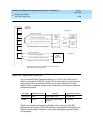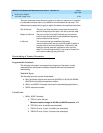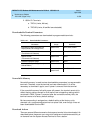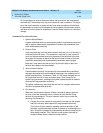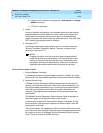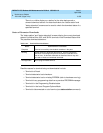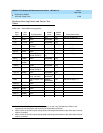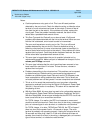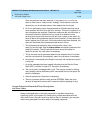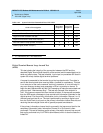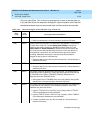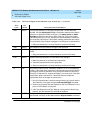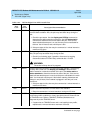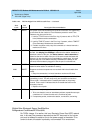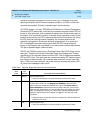
DEFINITY ECS Release 8.2 Maintenance for R8.2csi
555-233-119 Issue 1
April 2000
Maintenance Objects
3-508DIG-LINE (Digital Line)
3
Once the problem has been resolved, it may take up to 1 hour for the
alarm to clear due to ‘‘leaky bucket’’ strategy. If the problem cannot be
resolved by one of the steps above, then replace the circuit pack.
h. An in-line maintenance error has generated an off-board warning due to
some problem with the link to the voice terminal. This can be ignored if no
user complaints are received. Otherwise, make sure the voice terminal is
connected, check for defective wiring, check for a defective voice
terminal, and move voice terminal to a jack that is closer to the switch (in
terms of feet of wiring between the jack and the switch). If the problem still
exists, replace the circuit pack. Once the problem has been resolved, the
alarm will be retired after a predetermined amount of time.
i. This indicates that the station went off-hook while it was in the
ready-for-service state. Use the
status station
command to determine the
state of the station. The off-hook should have moved the station to
ready-for-service. No craft action is necessary.
j. This is the code that is generated when the link between the circuit pack
and the voice terminal is successfully reset. No craft action is necessary.
k. No terminal is connected to the Digital Line board. No maintenance action
is required.
l. An uplink message has been logged indicating that the Electric Power
Feed (EPF) is on with no load on it. No action is necessary.
m. The circuit pack’s message buffer is full. This may be caused by having
many display phones with heavy traffic connected to the circuit pack. No
action is necessary.
n. Internal system error. No action is necessary.
o. There is a problem with the voice terminal EEPROM. When the voice
terminal is repaired the alarm will be resolved with the passing of time.
System Technician-Demanded Tests: Descriptions
and Error Codes
Always investigate tests in the order presented in the table below when
inspecting errors in the system. By clearing error codes associated with the
Voice and Control Channel Local Loop Around Test,
for example, you may also
clear errors generated from other tests in the testing sequence.



